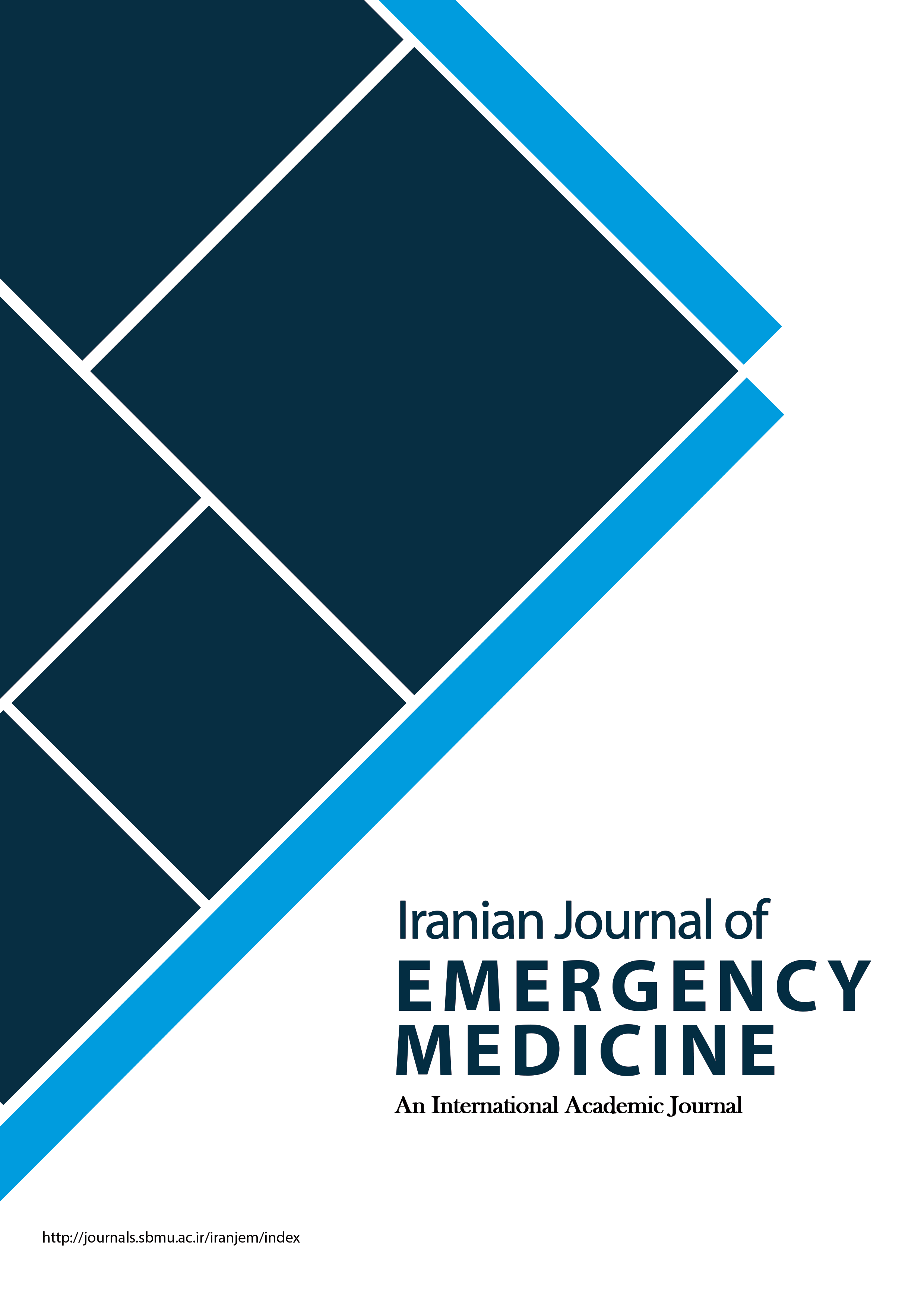Accuracy of clavicle bone measurement in detection of patient rotation during chest radiography; a cross-sectional study
Iranian Journal of Emergency Medicine,
Vol. 7 No. 1 (2020),
28 March 2020
,
Page e36
https://doi.org/10.22037/ijem.v7i1.31512
Abstract
Introduction: Patient rotation during chest x-ray is one of the important causes of decreased image quality and accuracy. Therefore, this study was designed and performed to calculate the accuracy of measuring the length of clavicle bones in detection of patient rotation during chest radiography.
Methods: In this diagnostic study, chest radiographs of 435 patients referring to Loghman Hakim Hospital were investigated for rotation via three methods: standard method (by a radiologist), measurement of clavicle bones (by emergency medicine resident), and visual method (by emergency medicine specialist). The information was recorded in a checklist and sensitivity, specificity, and positive and negative predictive values of the last two methods were calculated in comparison with the standard method for detecting patient rotation.
Results: In comparison with the standard method, the method of measuring the length of the clavicle had a sensitivity of 88.9%, specificity of 97.6%, a positive predictive value of 99.4%, a negative predictive value of 67.8%, and an accuracy of 90.6%. The visual method had a sensitivity of 66.9%, a specificity of 71.4%, a positive predictive value 90.7%, a negative predictive value 34.1%, and an accuracy of 67.8% compared to the standard method in determining the presence or absence of chest rotation.
Conclusion: Overall, the findings of our study indicated that the accuracy of clavicle length measurement method is not much different from that of the standard method in detection of patient rotation and can be used as its replacement in this regard.
- Clavicle; radiography, thoracic; diagnostic imaging; observer variation
How to Cite
References
Tarrac SE. A systematic approach to chest x-ray interpretation in the perianesthesia unit. Journal of perianesthesia nursing : official journal of the American Society of PeriAnesthesia Nurses. 2009;24(1):41-7; quiz 7-9.
Armstrong P, Wastie M, Rockall AG. Diagnostic Imaging: Wiley; 2010.
Bansal T, Beese R. Interpreting a chest X-ray. British journal of hospital medicine (London, England : 2005). 2019;80(5):C75-c9.
Siela D. Chest radiograph evaluation and interpretation. AACN advanced critical care. 2008;19(4):444-73; quiz 74-5.
Ketai L, Lofgren R, Meholic A. Fundamentals of Chest Radiology. 2nd ed. Philadelphia, PA: Elsevier Saunders; 2006.
Novelline RA, Squire LF. Squire's fundamentals of radiology: La Editorial, UPR; 2004.
Whitley AS, Jefferson G, Holmes K, Sloane C, Anderson C, Hoadley G. Clark's Positioning in Radiography 13E: crc Press; 2015.
Wilson AG. The chest radiograph in heart disease. Medicine. 2002;30(3):18-26.
Kesselman A, Soroosh G, Mollura DJ, Abbey-Mensah G, Borgstede J, Bulas D, et al. 2015 RAD-AID Conference on International Radiology for Developing Countries: the evolving global radiology landscape. Journal of the American College of Radiology. 2016;13(9):1139-44.
Antani S, Candemir S. Automated detection of lung diseases in chest X-rays. US National Library of Medicine. 2015.
Raoof S, Feigin D, Sung A, Raoof S, Irugulpati L, Rosenow III EC. Interpretation of plain chest roentgenogram. Chest. 2012;141(2):545-58.
Calderon G, Perez D, Fortman J, Kea B, Rodriguez RM. Provider perceptions concerning use of chest x-ray studies in adult blunt trauma assessments. The Journal of emergency medicine. 2012;43(4):568-74.
Eftekhar Vaghefi SH, Elyasi L, Akbari H, Rashidzade A, Zeiai A, Eftekhar Vaghefi S. Determination of Clavicle Bone Length to Height Ratio in 20-30 Year-Old Men and Women In Kerman. 2014.
Omid R, Kidd C, Yi A, Villacis D, White E. Measurement of Clavicle Fracture Shortening Using Computed Tomography and Chest Radiography. Clinics in orthopedic surgery. 2016;8(4):367-72.
Frutos LR. Determination of sex from the clavicle and scapula in a Guatemalan contemporary rural indigenous population. The American journal of forensic medicine and pathology. 2002;23(3):284-8.
Agladioglu K, Serinken M, Dal O, Beydilli H, Eken C, Karcioglu O. Chest X-rays in detecting injuries caused by blunt trauma. World journal of emergency medicine. 2016;7(1):55.
Gopal K, Singh A, Singh O, Sharma C. MORPHOMETRIC EVALUATION OF GLENOID CAVITY AND OTHER DIMENSIONS OF DRY HUMAN SCAPULAE. International Journal of Anatomy and Research. 2018;6:5339-45.
Mc Entee MF, Kinsella C. The PA projection of the clavicle: a dose-reducing technique. Radiation protection dosimetry. 2010;139(4):539-45.
- Abstract Viewed: 251 times
- pdf (فارسی) Downloaded: 123 times



